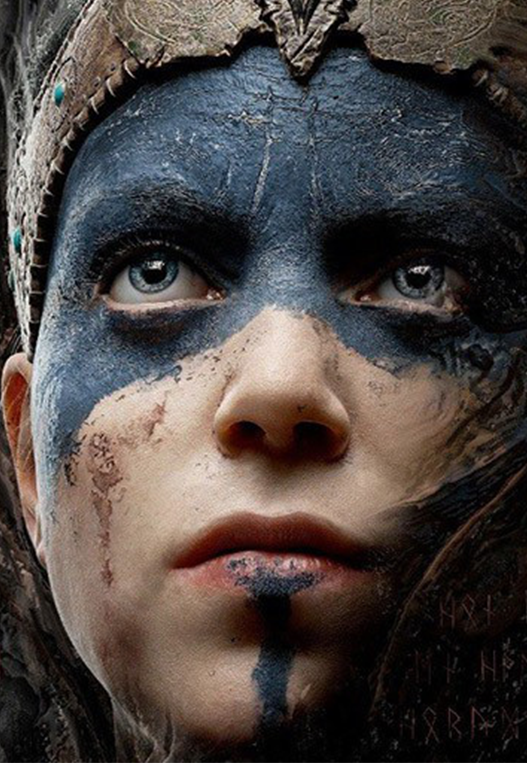- November 15, 2018
- Posted by: Ishaq Ali
- Category: Top Picks by iXie

Back in 2007 when the PS3 was still new in its piano black sheen, a game called Heavenly sword was released by a little-known developer by the name of Ninja Theory. Fast forward 10 years and we have Hellblade: Senua’s sacrifice. A critical and commercial success for Ninja Theory, that the studio so well deserved. But the success story of Hellblade is way more intriguing than the typical stories of game development woes. And Hellblade’s uniqueness, charm and appeal all ties into this story. Let’s take a look at how a studio that never learned to give up, gave us one of the most important games of 2017.

Ninja Theory

To understand the importance of Hellblade we need to look at the developer whose roots go way back to the OG Xbox. Ninja theory was originally known as Just Add Monsters. A small but ambitious studio that made their first game named Kung Fu Chaos for the original Xbox. However, despite critical acclaim, the game failed to gain any traction commercially. This nearly resulted in the studio’s demise before it was renamed and gained a new publisher in the form of Sony for their new project. They released Heavenly Sword, which was once again a critical hit and an important game for its time. This game incorporated advanced motion capture techniques which has now become an industry staple, much before the likes of Uncharted did.
Including talents like Andy Serkis, the game certainly was ambitious. But the limited install base of the then-struggling PS3 meant that this game too was a commercial failure. This lead to the end of their partnership with Sony. The struggling studio then utilized all the resources they had and went multiplatform with their next game, Enslaved: Odyssey to the West. This was once again a critically acclaimed, but the generally crowded October release date meant that the game was going against the likes of Call of Duty which was in its prime back then. Ultimately the game failed to gain traction sales-wise, despite the high praise it received among critics. Regardless of this, the studio was approached for the reboot of Devil May Cry. And although it was a great game on its own, it was panned down for the radical change in design especially with the protagonist. DMC was criticized right from the release of the first trailer and was doomed to fail. And the reception to the game was not so good as expected. At this point, Ninja Theory had given its all and had produced a slew of high-quality titles and had still failed financially. This lead to the cancellation of their next project, a sci-fi shooter which never saw the light of day.
Persistence is Key

If you are even vaguely familiar with how video game development and video game testing work you know where this is heading. Heck, for a studio to even survive after their very first commercial failure is rare, let alone four titles and a cancelled project. Their publisher would do the obvious and dissolve the studio. But Ninja Theory would not give up. In a move of desperation, the studio went independent. They divided their workforce into smaller groups and sourced them to help bigger companies on their own projects. Through this, the studio accumulated the necessary resources to start their next project. They did not want to lean towards crowdfunding as it has its own set of issues. Ninja Theory finally began work on Hellblade with a team of less than 25 working on the project. Most of the members of the team assumed multiple roles to make this happen. And this was no doubt a huge risk for them. A definite make or break project.

Belief in Quality

Ninja Theory knew what they wanted to do, and that required an art style that with high graphics fidelity in the lines of AAA games. They knew that quality is key and would not settle for shortcuts. Believing in their ability to deliver quality games the team set out to make a tight narrative focused game with AAA graphics but with half the runtime, which in turn would cost half the money for the player. This helped them avoid unnecessary padding to the game and to focus on the story alone. Being a great storyteller themselves, Ninja Theory, now without a mainstream actor like Serkis, focused on making a game with a grounded and more realistic take on its underlying subject matter. Psychosis. They did justice to this by involving real doctors and professionals in the development of the game.
Well Deserved Success

During the development process, the studio created various developer diaries to get the community involved. This was the way to go as they did not have a huge budget to market the game. They had to completely rely on word of mouth. And the game spoke for itself upon release. Media outlets praised the game in their reviews and positive word of mouth helped the game sell a lot more than the studio’s modest expectations. This passion project was done with so much of love and care and the community gave the studio the love it deserved.
Future is Bright

This success has now resulted in Ninja Theory being acquired by Microsoft with “all the resources and tools needed for their next game, without hindering their creative freedom”. For a studio that was in the brink of non-existence more than a couple of times, this is as good as a result as one can expect.

Lesson Learnt

This goes to show that in a day and age of copycats and cheap cash grabs in the name of games, true dedication towards the art and the quality of it really does pay off. And it can do magical things. This has been one the most inspiring stories in the gaming world and I for one cannot wait for Ninja Theory’s next project.
